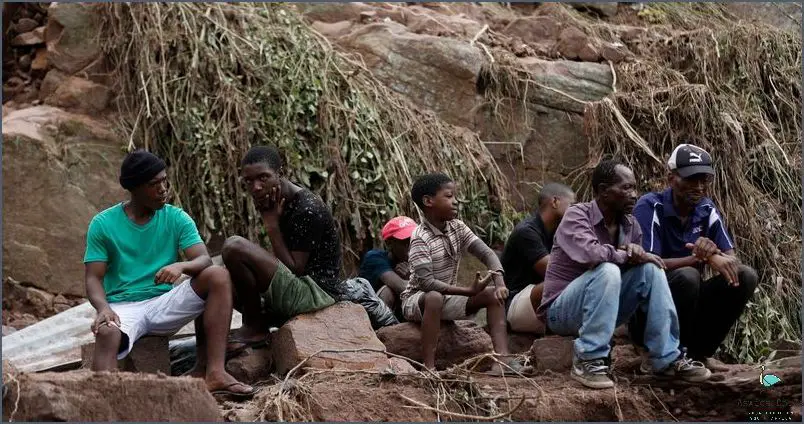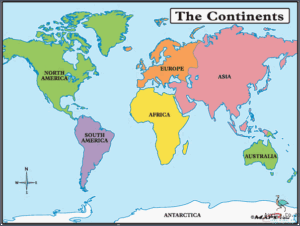
A cold front is a mass of cold air that moves in to replace warmer air. In South Africa, cold fronts usually occur in winter, bringing cold, wet and sometimes windy weather.
Cold fronts can cause large temperature changes in a short space of time, and can also bring strong winds and heavy rain. In some cases, they can even lead to snowfall.
While cold fronts can be disruptive, they also bring much-needed relief from the heat of summer. So, if you’re planning on spending time outdoors in South Africa during winter, be sure to pack your warm clothes and weather-appropriate gear.
Contents
Cold Fronts South Africa
Cold fronts are an important weather phenomenon in South Africa. They are caused by cold air displacing warmer air, and can produce strong winds, rain and thunderstorms. Cold fronts are especially common in the winter months and can bring temperatures down significantly in a short period of time. They also often cause strong and gusty winds, as well as reduced visibility due to poor visibility caused by the rain. Cold fronts can be very dangerous in South Africa, as they often bring about heavy storms and flooding, which can cause significant damage to property and lives. In order to stay safe during a cold front, it is important to pay attention to weather reports and be aware of any severe weather warnings that may be issued.
Types of Cold Fronts in South Africa
South Africa is home to some of the most extreme weather on the planet, and cold fronts are no exception. Cold fronts occur when cold air moves in from the south, resulting in a sudden drop in temperatures. South Africa experiences several types of cold fronts that can cause drastically different weather conditions.
The first type of cold front is the occluded front, which is caused when two different air masses merge. This occurs when a cold air mass moves from the south and meets a warmer air mass from the north. This creates a zone of instability in the atmosphere, resulting in heavy rain and strong winds. Occluded fronts usually move from east to west, and can cause large temperature drops in a short amount of time.
The second type of cold front is the dry cold front. This type of cold front occurs when a cold air mass moves in from the south and displaces warm air. As this cold air moves in, it causes a drop in temperatures and a decrease in humidity. This type of cold front is usually accompanied by strong winds and clear skies.
The third type of cold front is the warm cold front. This type of cold front occurs when a cold air mass moves in, but it is warmer than the air that it is replacing. This can cause rain, but the temperatures will remain relatively mild. Warm cold fronts move from west to east and can cause large temperature drops in a short amount of time.
Finally, South Africa also experiences a fourth type of cold front called the cold front convergence. This type of cold front occurs when two different cold fronts move in from two different directions. This results in a zone of instability in the atmosphere and can cause heavy rain and strong winds. Cold front convergence usually occurs from east to west and can cause large temperature drops in a short amount of time.
Overall, South Africa experiences several different types of cold fronts that can cause drastically different weather conditions. Occluded fronts, dry cold fronts, warm cold fronts, and cold front convergence can all cause large temperature drops in a short amount of time. It is important to be aware of these different types of cold fronts and be prepared for sudden weather changes.
Causes of Cold Fronts in South Africa

Cold fronts in South Africa are the result of a variety of factors. These fronts can bring about drastic changes in temperature, humidity, and weather conditions. It’s important to understand the causes of these fronts in order to be able to prepare for them and take the necessary precautions.
The main cause of cold fronts in South Africa is the movement of cold and dry air from the interior of the country, towards the coastal and interior areas. This cold air is usually accompanied by strong winds, which can cause a sudden drop in temperature. The cold air picks up moisture from the sea as it passes over the coast, and this moisture is then deposited over the interior of the country, resulting in a drop in temperature.
Another major cause of cold fronts in South Africa is the migration of cold air from the northern hemisphere. This cold air can travel over the Indian Ocean and reach the southern hemisphere, cooling down the coastal and interior regions of the country. This phenomenon is known as the Antarctic Oscillation and is a natural occurrence in the atmosphere.
Lastly, cold fronts in South Africa can be caused by the movement of cold air from the high altitudes of the country. This cold air is brought down to the lower levels of the atmosphere due to the presence of strong winds, leading to a sudden drop in temperature. This phenomenon is known as the Arctic Oscillation and is caused by changes in the upper atmosphere.
In conclusion, cold fronts in South Africa can be attributed to the movement of cold and dry air from the interior of the country, the migration of cold air from the northern hemisphere, and the movement of cold air from the high altitudes of the country. It’s important to be aware of these causes in order to prepare for the cold fronts and take the necessary precautions.
Effects of Cold Fronts on South Africa
South Africa is no stranger to cold fronts – the weather patterns that bring rain and cooler temperatures to the country. But what are the effects of these cold fronts on South Africa? Let’s take a look.
First and foremost, cold fronts bring rain. This is especially beneficial for South Africa, where the agricultural sector is heavily reliant on rainfall. The winter season is the wettest season in South Africa, and cold fronts are largely responsible for this. Cold fronts bring much-needed relief to drought-stricken areas, and can even break long-term droughts.
Cold fronts also bring cooler temperatures, which bring relief to those suffering from the heat during the summer months. This cooler air can also be beneficial to wildlife, as it helps to keep animals and plants healthy.
Another benefit of cold fronts is that they can help to reduce the risk of wildfires. As the cold air moves in, it can help to reduce the potential fire danger, making it more difficult for a fire to start and spread.
Finally, cold fronts can also help to reduce air pollution. This is because the colder air helps to trap pollutants and particulate matter in the atmosphere, preventing them from reaching ground level. This can help to reduce the health risks associated with air pollution.
In conclusion, cold fronts bring numerous benefits to South Africa. They bring rain and cooler temperatures, which can help to reduce drought, provide relief from the heat, reduce the risk of wildfires, and reduce air pollution. As such, cold fronts are an important part of South Africa’s weather pattern and should be respected and appreciated.
Conclusion
The effects of cold fronts in South Africa can vary from region to region, with some areas experiencing more extreme conditions than others. In general, cold fronts can bring below average temperatures and strong winds to the region, accompanied by heavy rain and thunderstorms. Cold fronts can also bring snowfall in the higher elevations of the country, particularly in the south-western parts of South Africa. Cold fronts can also lead to cooler nights with frost and ice forming in some areas. In addition, cold fronts can lead to disruptions in essential services such as electricity and water supply. It is important for South Africans to stay informed and prepared for the potential impacts of cold fronts.




